Guildhall Art Gallery
The City of London Corporation owns one of the wide-ranging collection of art works, a total of 4,500 including over 1,300 oil paintings of famous as well as some lesser known artists.
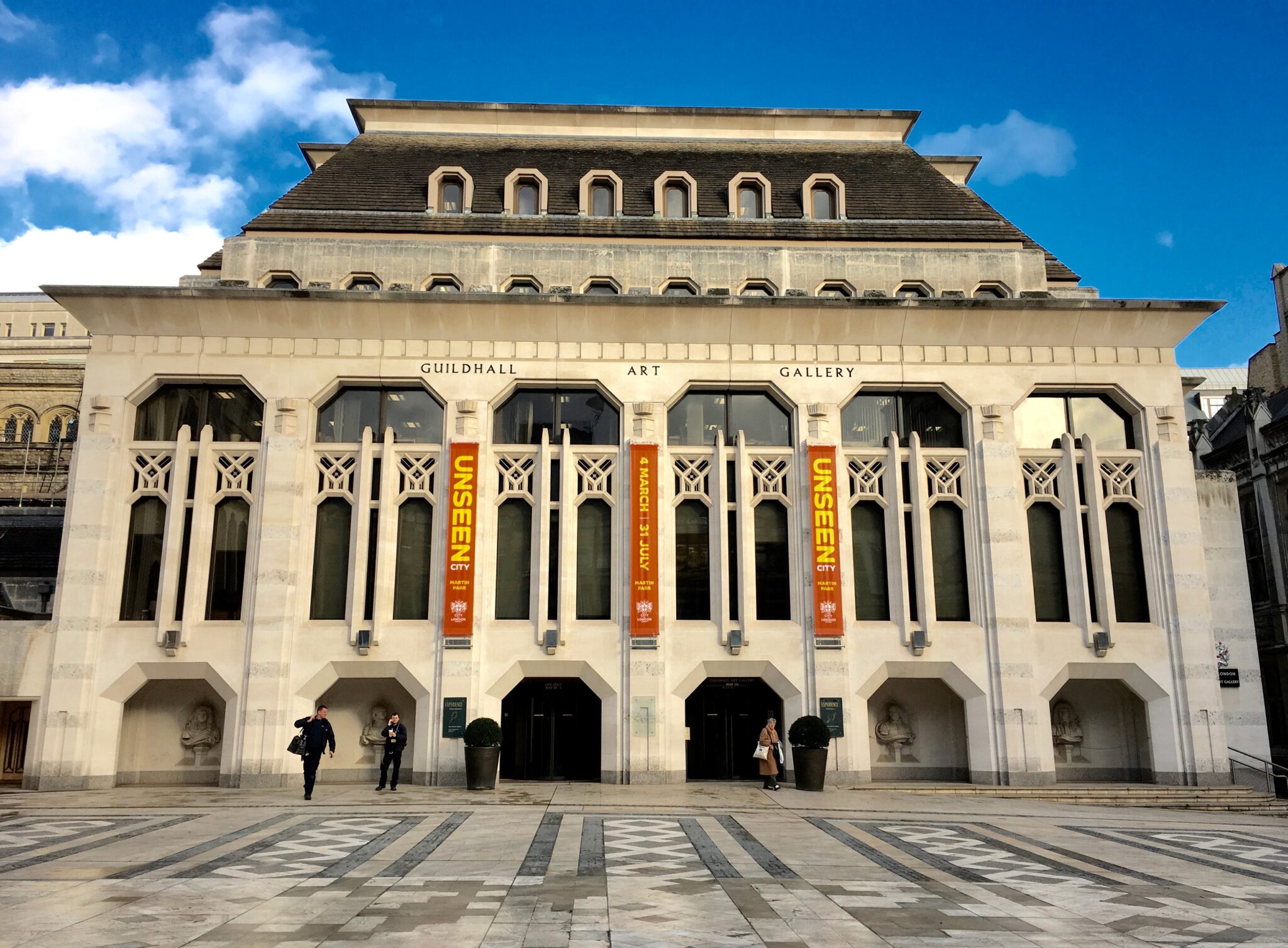 The Guildhall Art Gallery, home to this huge collection, was originally built in 1885 but was destroyed by The Blitz in 1941. The vast majority of the collection was hidden from public view for so many years until the present building (above picture) was redeveloped and the gallery reopened in 1999. The collection is both important and fascinating; dating from 1670 to the present, including Pre-Raphaelite masterpieces and a wide-range of paintings documenting London’s dramatic history. And the Victorian collection is possibly the best of its kind, with works by John Millais, Juan Tissot, Frank Holl, Dante Gabriel Rossetti to name but a few. As you enter the main entrance, there is a wide staircase leading up to the Main Gallery, a spacious and relaxing open space lined with fabulous Victorian paintings. All paintings were framed and hung in true Victorian fashion, clustered one above the other and against an emerald green wall.
The Guildhall Art Gallery, home to this huge collection, was originally built in 1885 but was destroyed by The Blitz in 1941. The vast majority of the collection was hidden from public view for so many years until the present building (above picture) was redeveloped and the gallery reopened in 1999. The collection is both important and fascinating; dating from 1670 to the present, including Pre-Raphaelite masterpieces and a wide-range of paintings documenting London’s dramatic history. And the Victorian collection is possibly the best of its kind, with works by John Millais, Juan Tissot, Frank Holl, Dante Gabriel Rossetti to name but a few. As you enter the main entrance, there is a wide staircase leading up to the Main Gallery, a spacious and relaxing open space lined with fabulous Victorian paintings. All paintings were framed and hung in true Victorian fashion, clustered one above the other and against an emerald green wall.
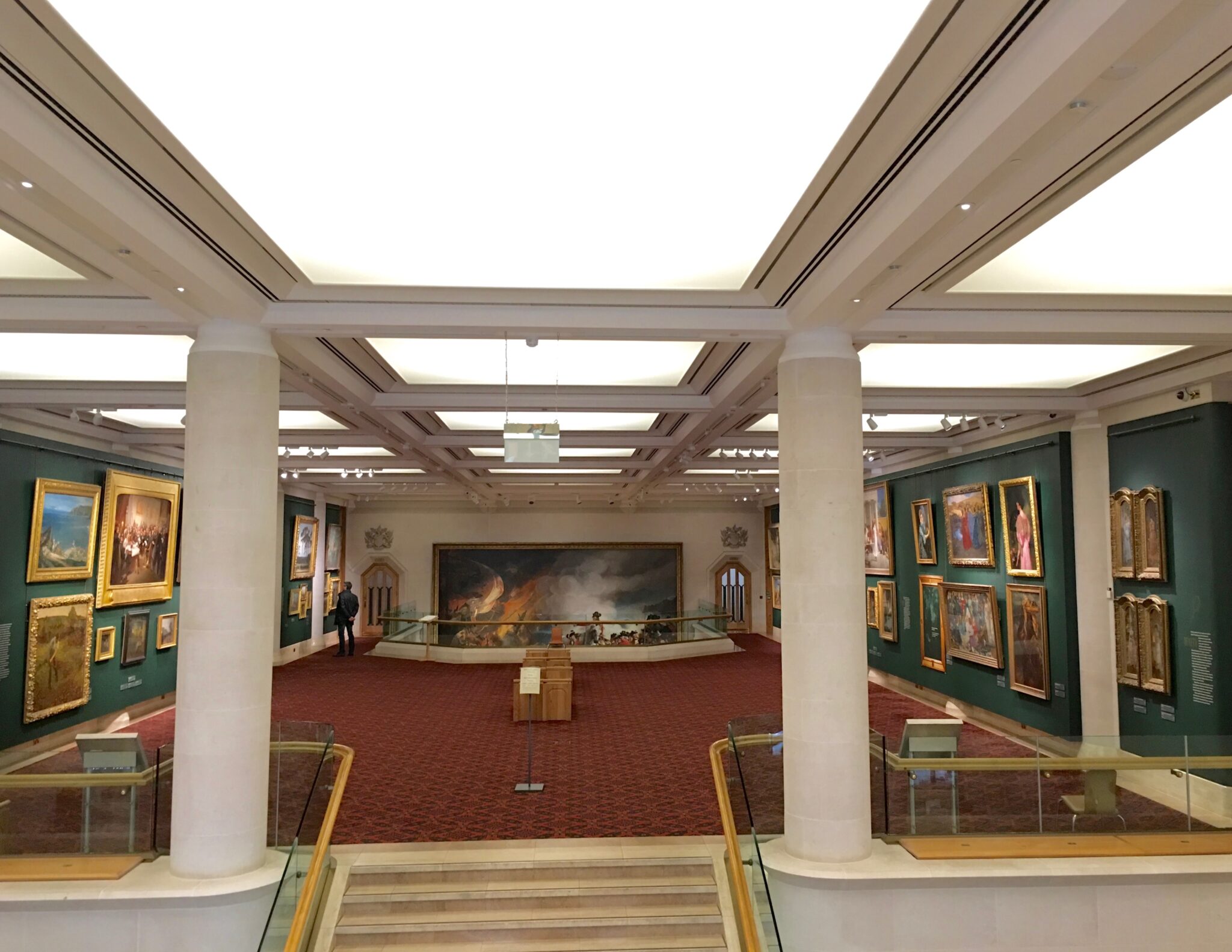 I love Victorian art, of which the gallery have an extensive and comprehensive collection, and they are arranged according to themes — home, beauty, faith, leisure, work, love and imagination, each of which is introduced by a paragraph or two setting the Victorian context.
I love Victorian art, of which the gallery have an extensive and comprehensive collection, and they are arranged according to themes — home, beauty, faith, leisure, work, love and imagination, each of which is introduced by a paragraph or two setting the Victorian context.
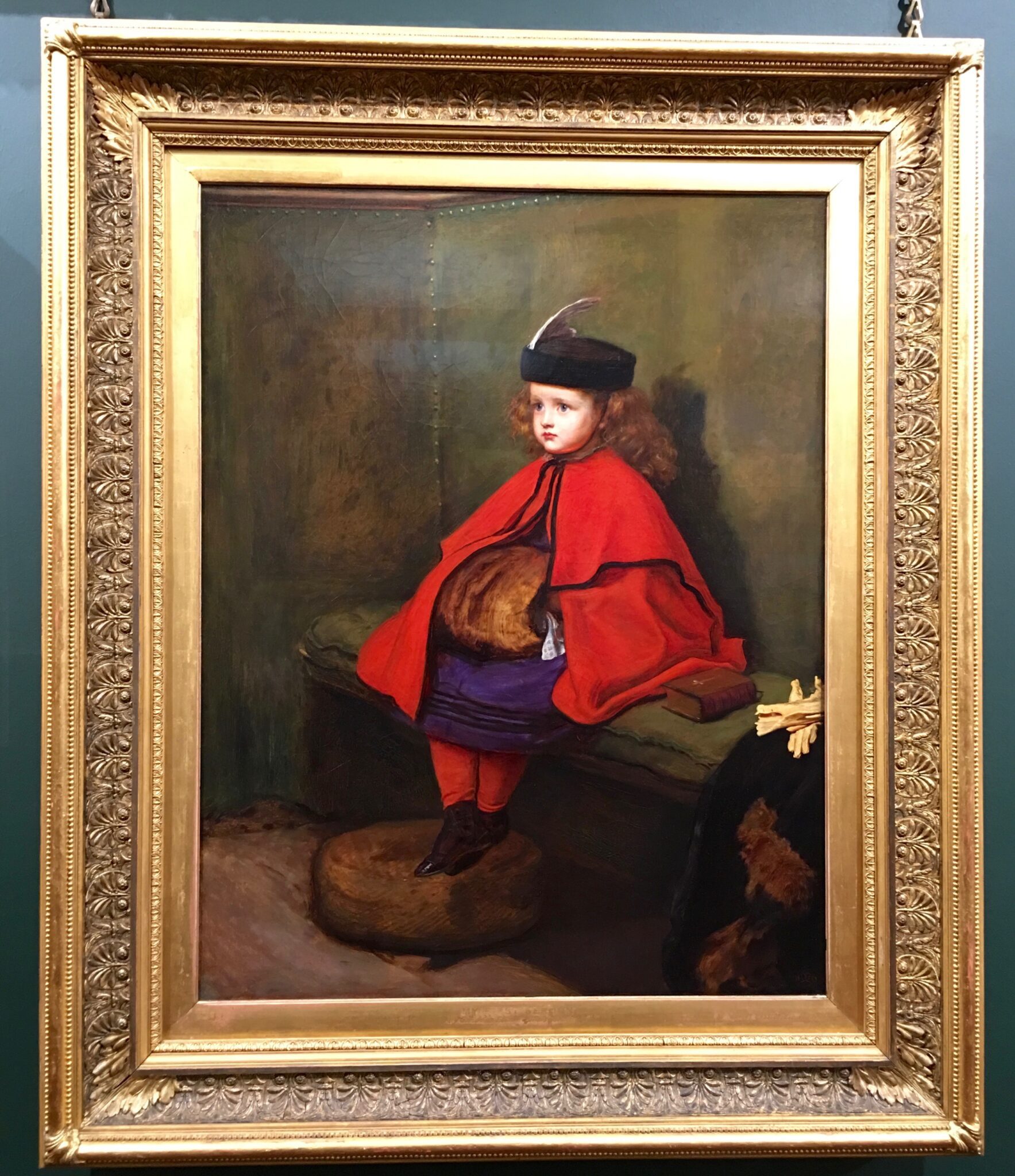
My absolute favourite of the whole collection is a set of paintings called ‘My First Sermon’ (above pic) and ‘My Second Sermon’ (next pic) by John Everett Millais. The portrait of the girl (the painter’s five-year old daughter Effie) sitting in the pew in her red cape and red stockings, with black hat on top of her curly blonde hair, and soft furry muff wrapped around her hands listening intently to her ‘First Sermon’, and on the ‘Second Sermon’ the little girl got bored and fell asleep! 🙂 The innocent image of the girl with a bible on the pew represents not just the artist’s mastery of capturing children (he often used his daughter as a model), but also of the Victorian religious sentimentality.
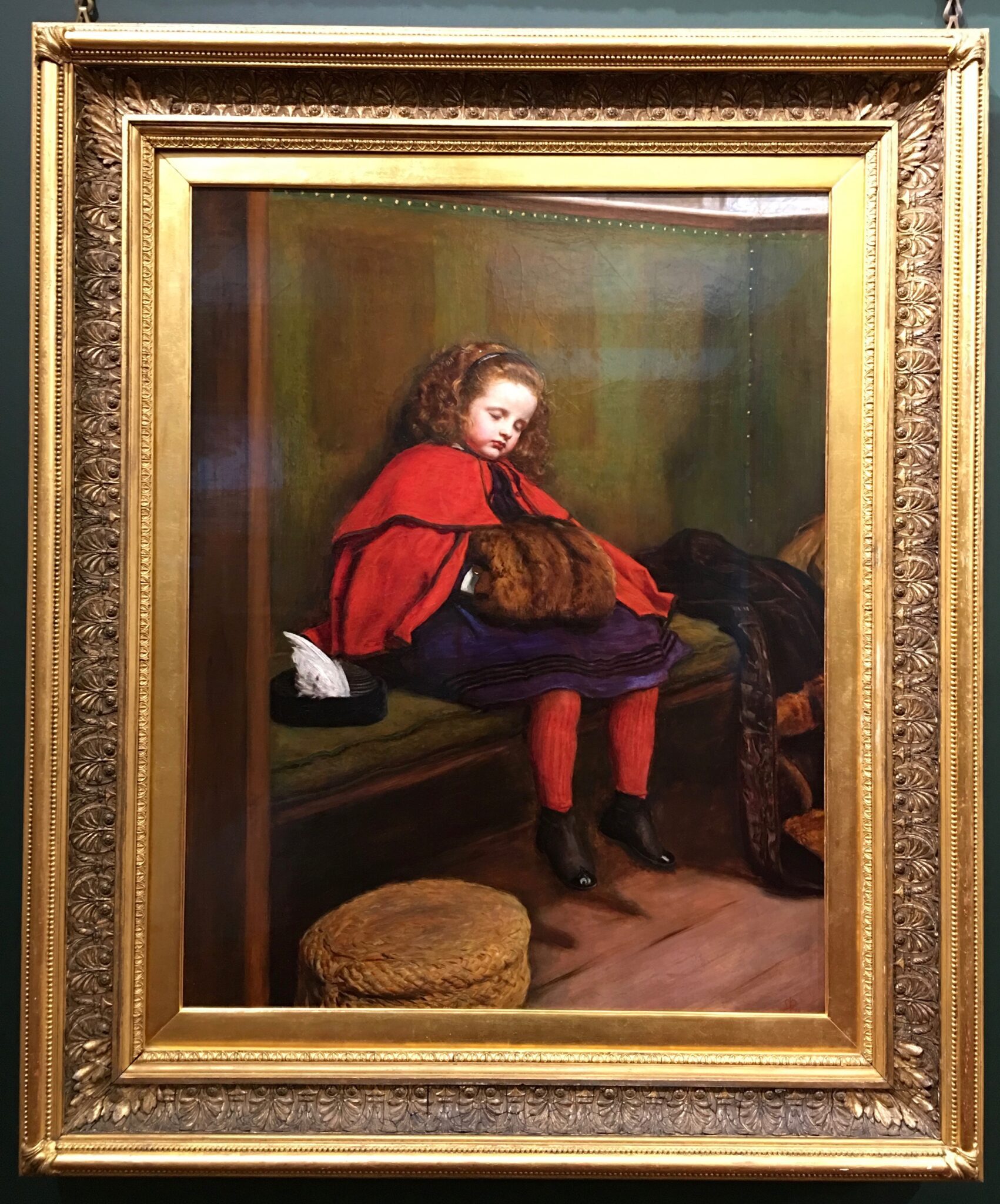
Both pictures were painted in the old church at Kingston-on-Thames, were the Millais family lived. The practice of faith and the role of religion in society occupied a position in everyday Victorian life, and the subject dominated paintings and other art works.
 My next favourite is the ‘Execution of Lady Jane Grey’ by Paul Delaroche. The painting is a gripping narrative of helplessness, grief and despair of two women, Lady Jane, blinded-folded and being prepared by an officer of the Tower, and another lady sitting on the ground completely shattered at the sight of the executioner holding an axe ready for the execution. (In reality, I’ve read from a biography of Lady Jane by Faith Cook, it occurred in an open air outside the Tower of London and not in a dark room as the painting shows). Lady Jane Grey was proclaimed Queen of England on 10 July 1553 only to be deposed nine days later hence, she’s famously referred to as “The Nine Days’ Queen.” Queen Mary I, the daughter of Catherine of Aragon and King Henry VIII, and a Catholic like her mother, signed Lady Jane’s death warrant despite the fact that they are cousins. Lady Jane was a Protestant like his cousins King Edward VI and Queen Elizabeth I (Queen Mary I’s half-brother and half-sister respectively), and she became one of the first Christian martyrs to be persecuted during the reign of Queen Mary I also known as ‘Bloody Mary’ because she killed so many Christians in her short five-year reign than all other monarchs put together.
My next favourite is the ‘Execution of Lady Jane Grey’ by Paul Delaroche. The painting is a gripping narrative of helplessness, grief and despair of two women, Lady Jane, blinded-folded and being prepared by an officer of the Tower, and another lady sitting on the ground completely shattered at the sight of the executioner holding an axe ready for the execution. (In reality, I’ve read from a biography of Lady Jane by Faith Cook, it occurred in an open air outside the Tower of London and not in a dark room as the painting shows). Lady Jane Grey was proclaimed Queen of England on 10 July 1553 only to be deposed nine days later hence, she’s famously referred to as “The Nine Days’ Queen.” Queen Mary I, the daughter of Catherine of Aragon and King Henry VIII, and a Catholic like her mother, signed Lady Jane’s death warrant despite the fact that they are cousins. Lady Jane was a Protestant like his cousins King Edward VI and Queen Elizabeth I (Queen Mary I’s half-brother and half-sister respectively), and she became one of the first Christian martyrs to be persecuted during the reign of Queen Mary I also known as ‘Bloody Mary’ because she killed so many Christians in her short five-year reign than all other monarchs put together.
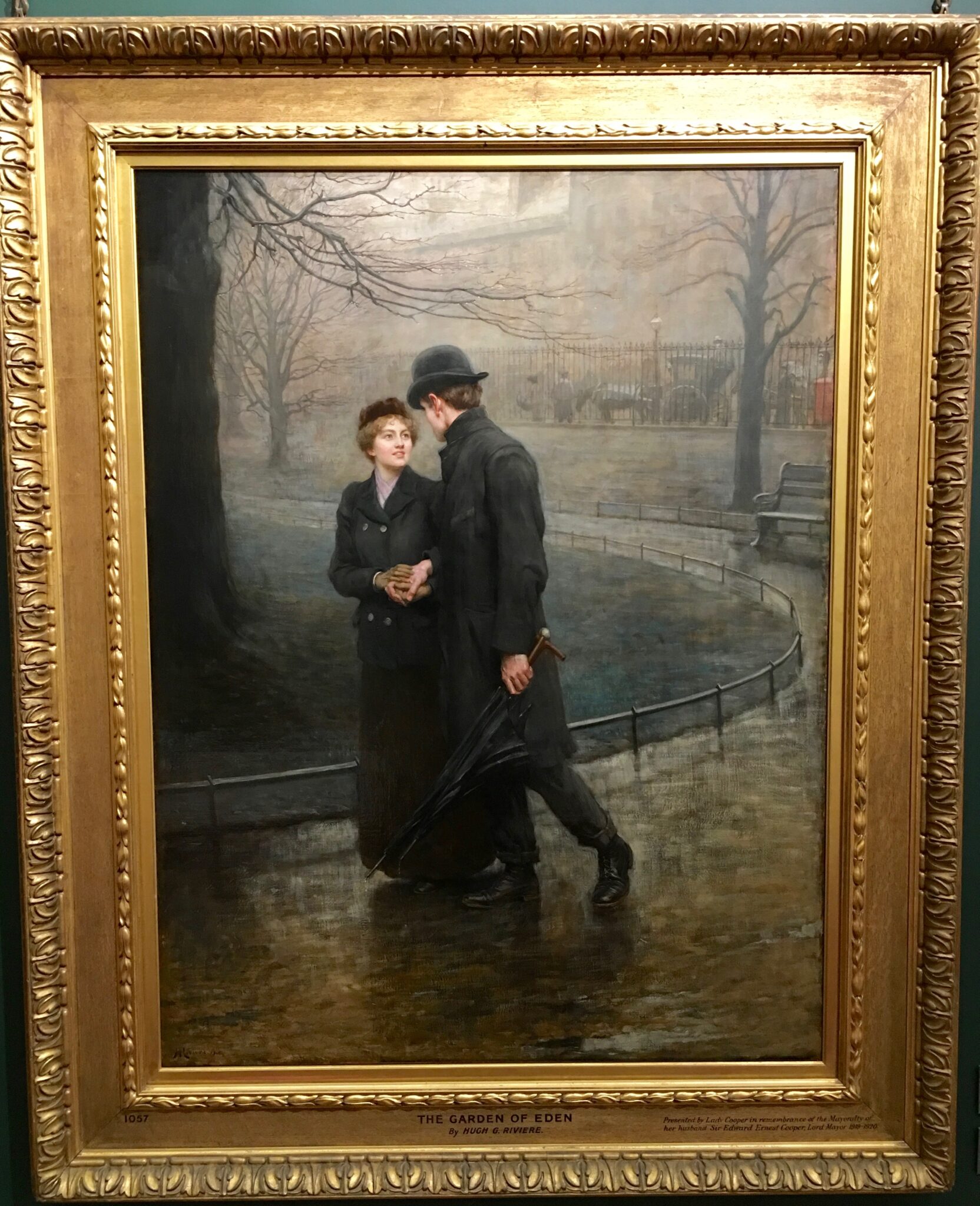 This wonderful life size painting ‘The Garden of Eden’ by Hugh Goldwin Riviere on the subject of Love is captivating.
This wonderful life size painting ‘The Garden of Eden’ by Hugh Goldwin Riviere on the subject of Love is captivating.
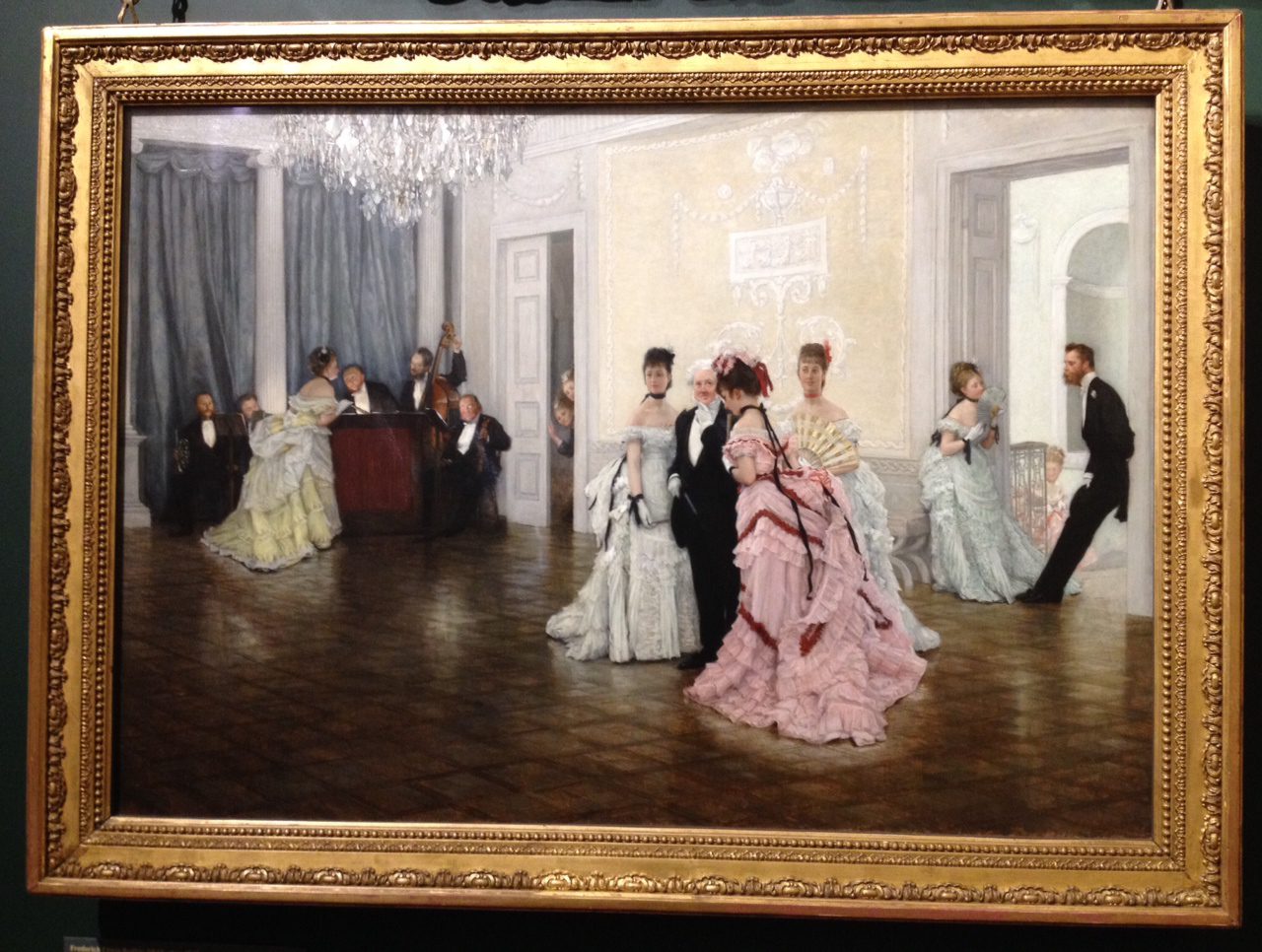 Another work I totally adore is this painting called ‘Too Early’ by James Tissot. It perfectly represents the ‘Upstairs and Downstairs’ Victorian culture; the intriguing portrayal of ‘formality’ — aristocratic ladies and gentlemen at the ballroom in their best outfits — with the ‘informality’ — the casualness of the ladies chatting and/or flirting with the men while waiting for the Concert or perhaps a Ball to start, while the maids were peeking around the door to watch the thrills and spills — a story they can share ‘downstairs’ with everyone else. 😉
Another work I totally adore is this painting called ‘Too Early’ by James Tissot. It perfectly represents the ‘Upstairs and Downstairs’ Victorian culture; the intriguing portrayal of ‘formality’ — aristocratic ladies and gentlemen at the ballroom in their best outfits — with the ‘informality’ — the casualness of the ladies chatting and/or flirting with the men while waiting for the Concert or perhaps a Ball to start, while the maids were peeking around the door to watch the thrills and spills — a story they can share ‘downstairs’ with everyone else. 😉

Under the subject of Beauty, I particularly like the ‘La Ghirlandata’ (1873) by Dante Gabriel Rossetti. The voluptuous, “red-haired stunners” as the artist himself called them, is naturally striking, and works like this fed into the movement which became later known as “Art for Art’s sake” or “Aestheticism.”
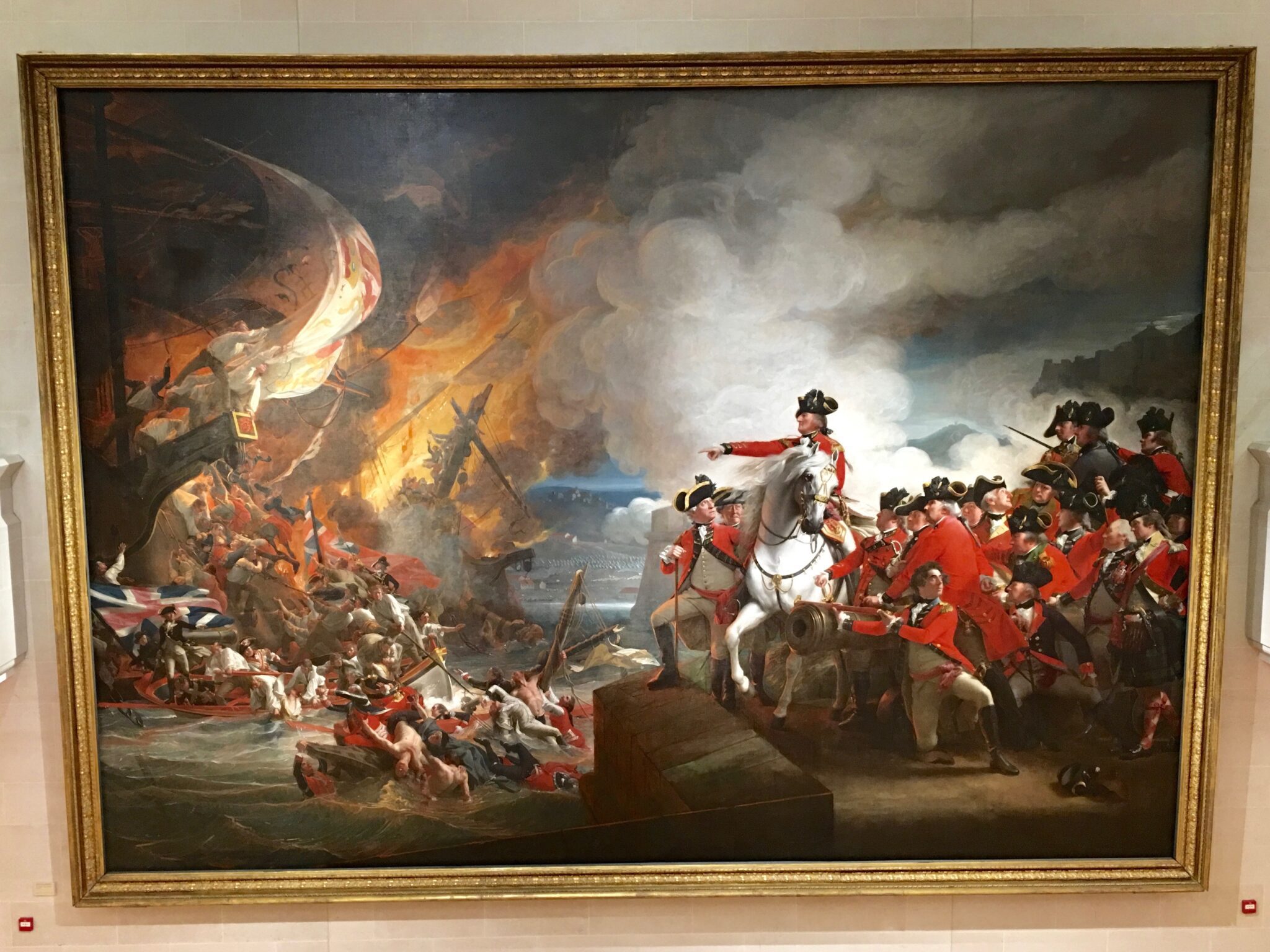 The centrepiece of the gallery is John Singleton Copley’s massive painting called “The Defeat of the Floating Batteries at Gibraltar, 1782.” It is hanging on the end wall occupying two floors, and portrays exemplary heroism.
The centrepiece of the gallery is John Singleton Copley’s massive painting called “The Defeat of the Floating Batteries at Gibraltar, 1782.” It is hanging on the end wall occupying two floors, and portrays exemplary heroism.
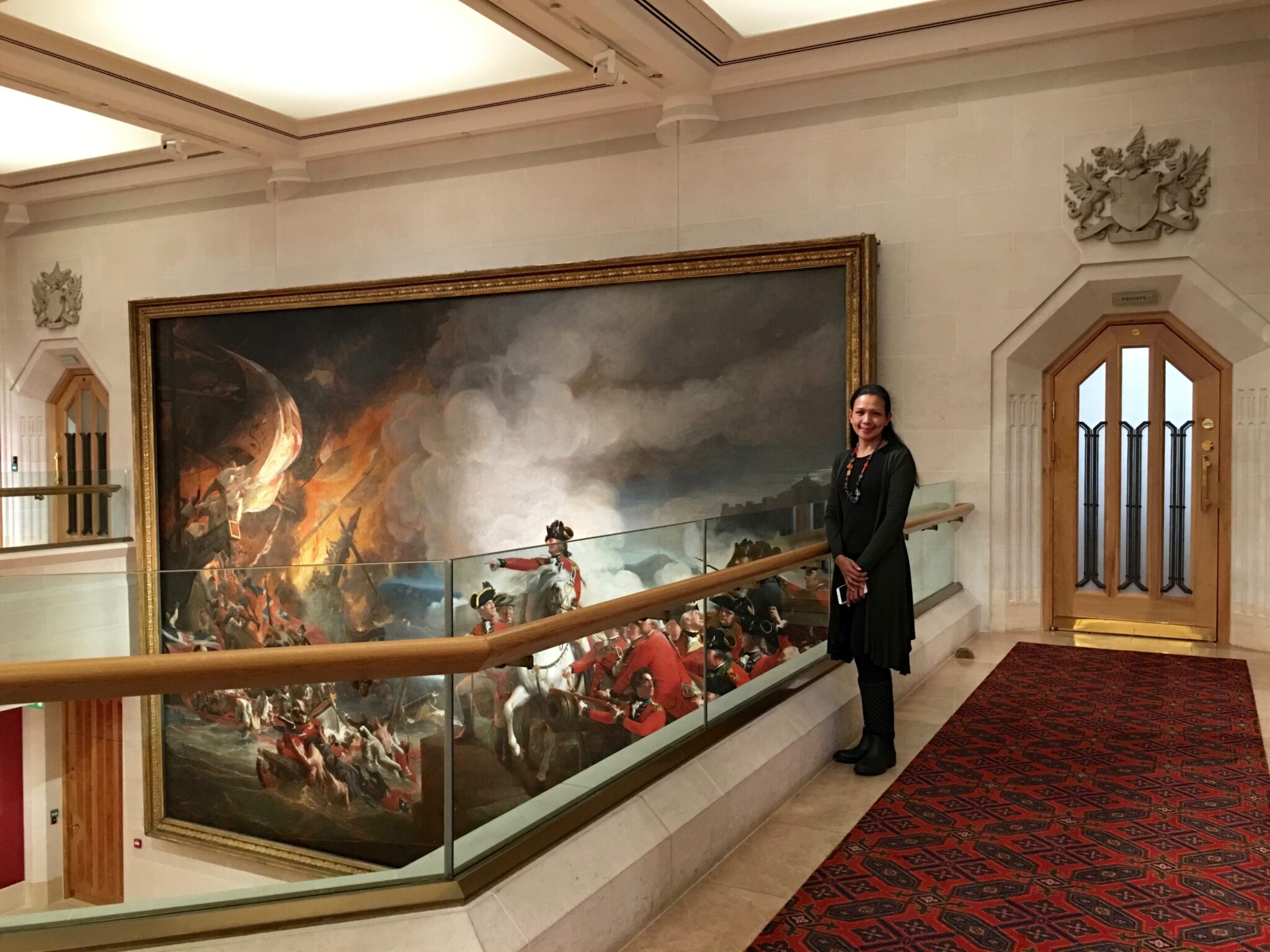
The paintings have labels displaying titles, names of the artist and the dates they were made, but they have no description or any explanation text whatsoever. But because I’ve read a lot of British ancient/modern history books as well as the social history of the Victorian and Georgian period, I am familiar with the scenes portrayed by the artists and I am able to appreciate its historical and cultural significance.
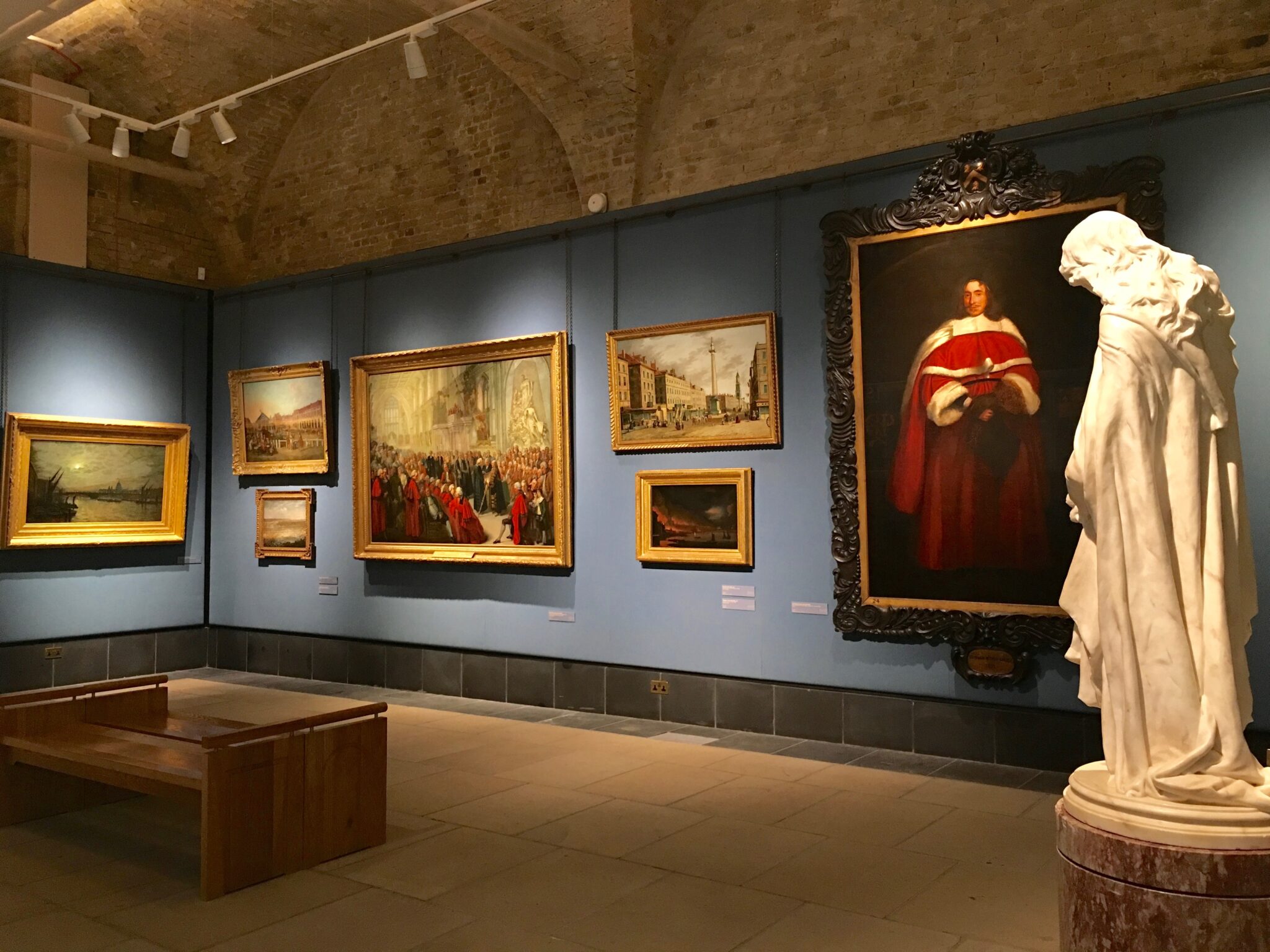 The gallery on the ground floor contains plenty of City of London related works such as ‘The Lord Mayor’s Procession by Water to Westminster’ by Richard Paton, the famous ‘Opening of the Tower Bridge‘ by William Lionel Wyllie, and many other famous art works.
The gallery on the ground floor contains plenty of City of London related works such as ‘The Lord Mayor’s Procession by Water to Westminster’ by Richard Paton, the famous ‘Opening of the Tower Bridge‘ by William Lionel Wyllie, and many other famous art works.
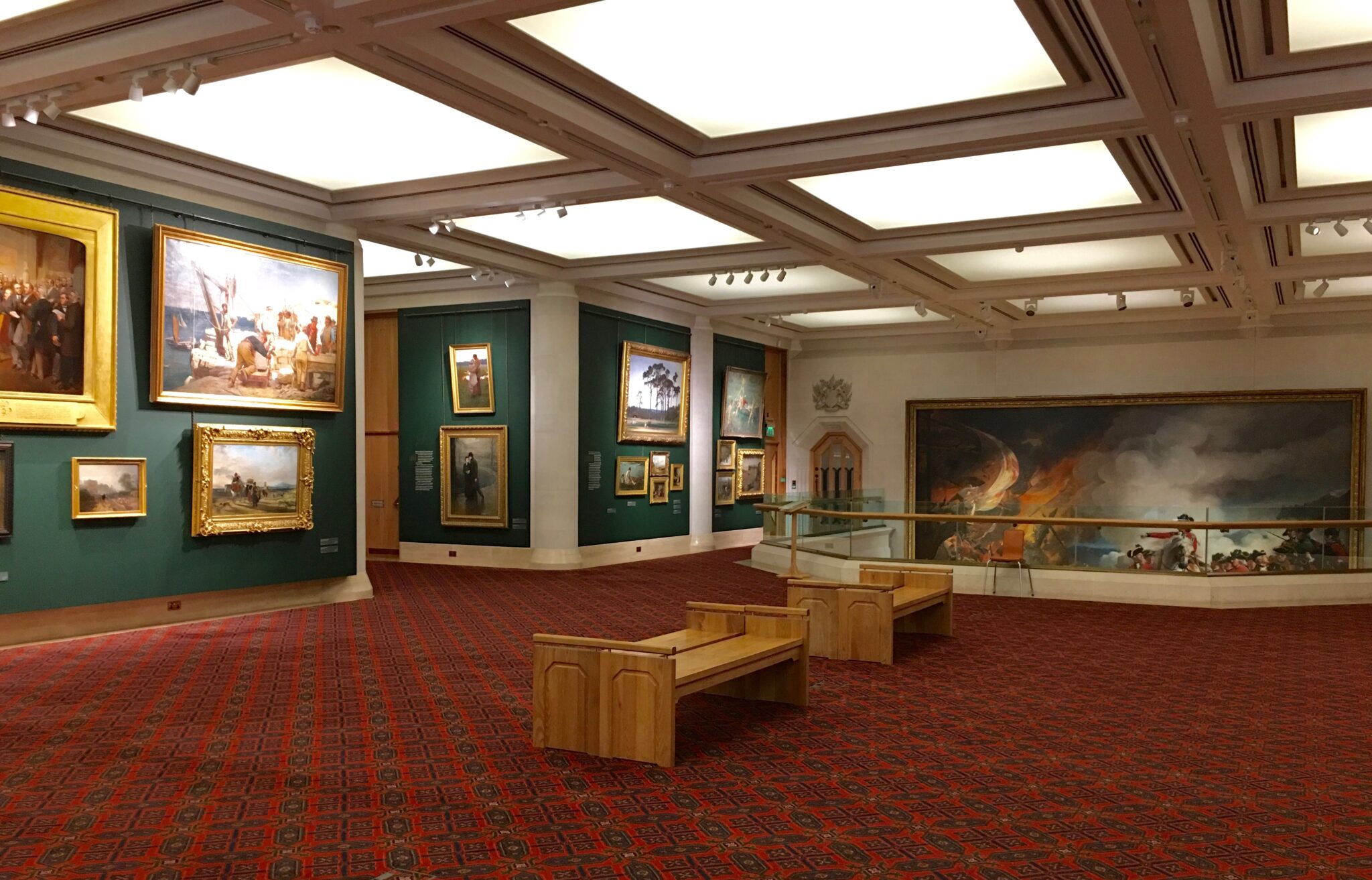 The City of London Corporation also owns a huge collection of artefacts: extensive archives of films, photographs, maps, etc., that take up the equivalent of 100 km or 62 miles. In 2014 a new gallery, spanning a whole floor of the building, was opened to showcase some of these treasures, and the exhibit changes regularly every 2-3 months. On display during our visit was the surviving copy of the 1297 Magna Carta as well as the “Shakespeare Deed,” containing one of only six ‘authenticated’ examples of Shakespeare’s signature. It’s on exhibit until September 2016 to commemorate the 400th anniversary of William Shakespeare’s death.
The City of London Corporation also owns a huge collection of artefacts: extensive archives of films, photographs, maps, etc., that take up the equivalent of 100 km or 62 miles. In 2014 a new gallery, spanning a whole floor of the building, was opened to showcase some of these treasures, and the exhibit changes regularly every 2-3 months. On display during our visit was the surviving copy of the 1297 Magna Carta as well as the “Shakespeare Deed,” containing one of only six ‘authenticated’ examples of Shakespeare’s signature. It’s on exhibit until September 2016 to commemorate the 400th anniversary of William Shakespeare’s death.
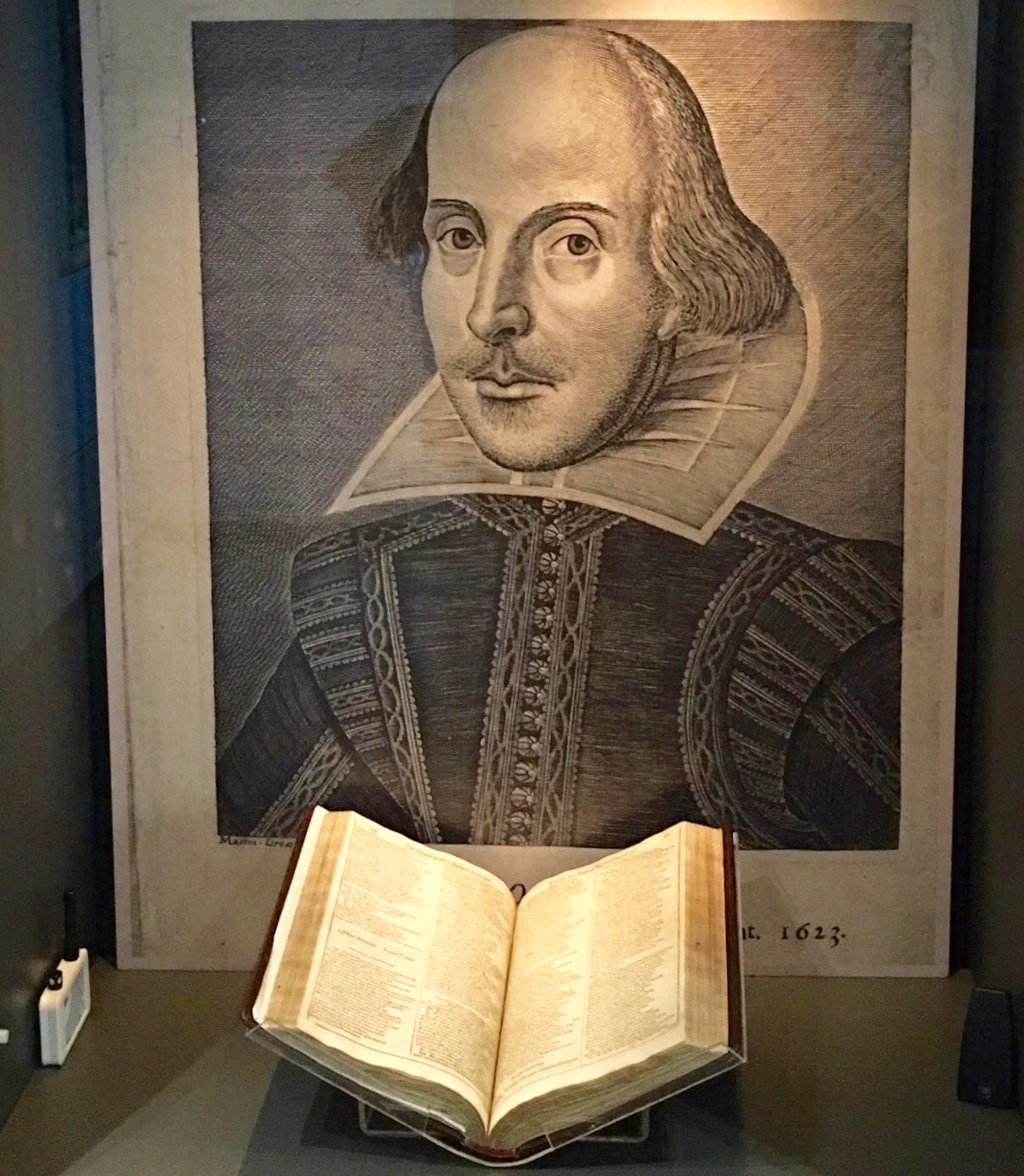 A copy of Shakespeare’s First Polio was on display as part of a series of events marking 400 years since William Shakespeare’s death.
A copy of Shakespeare’s First Polio was on display as part of a series of events marking 400 years since William Shakespeare’s death.
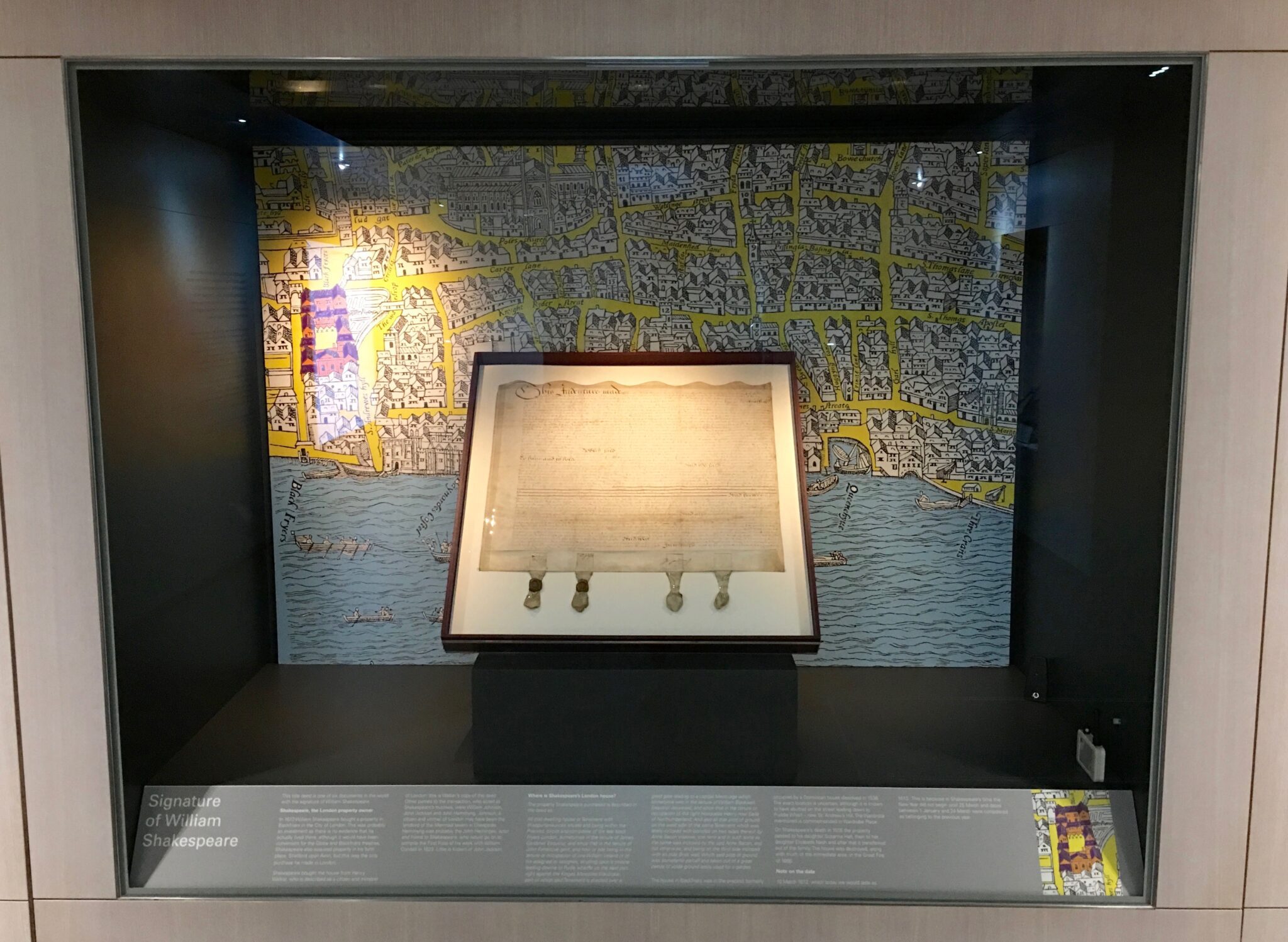
The gallery has temporary exhibits all year round, but the Victorian paintings and the Roman Amphitheatre are the real focus. Their Napoleonic era naval paintings are the best I’ve seen, and in my humble opinion, are second to none. Their Victorian art collection is possibly the best anyone will ever see. Overall, the collection is quite impressive, and it makes the Guildhall Art Gallery one of my favourites, and another essential place to visit even for anyone who is not into art and culture. Just like most world-class museums and galleries in London, it’s free entry, you don’t have to spend a single penny to get in! I’d recommend visiting not just the Guildhall Art Gallery and the Roman Amphitheatre but also the Guildhall Great Hall, Guildhall Library and St Lawrence Jawry, they are in the same vicinity.